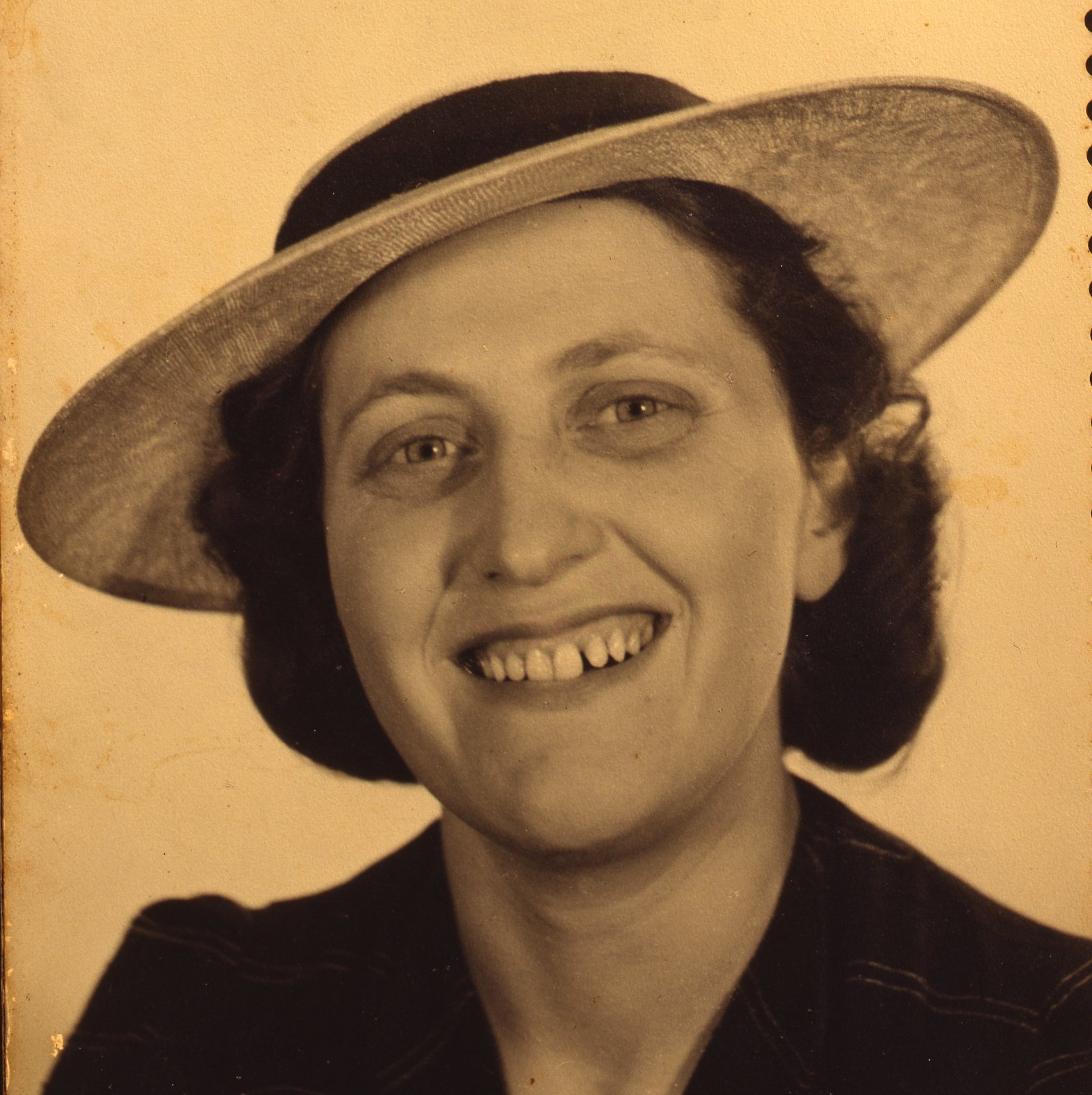Rachel van Amerongen - Frankfoorder
Rachel Frankfoorder met the eight people from the Secret Annex in Camp Westerbork. For months, Frankfoorder stayed not far from Anne and Margot Frank and Auguste van Pels in the various concentration camps. After the war she recounted her meetings with them.
In Westerbork, the eight people from the Secret Annex met a lot of people, some of whom they already knew. After the war, those still alive gave testimony of the meetings with Anne, Margot, Edith, Otto, Peter, Hermann, Auguste or Fritz. One of those people was thirty-year-old Rachel Frankfoorder (1914-2012).[1]
Rachel and her husband Charles Lu A Si (1911-1942) were quick to join the resistance after the outbreak of war. Her husband was arrested as a communist on 25 June 1941 and, after being sent to various concentration camps, died on 15 November 1942 in Auschwitz.[2] Rachel was arrested on a train in the summer of 1944 in possession of false papers and was sent to Westerbork.[3] She remembered meeting the Frank family in the punishment barracks.
Westerbork
Rachel Frankfoorder worked in Westerbork providing ‘support services’, which involved scrubbing, cleaning the toilets and, when a transport arrived, distributing clogs and overalls to newly arrived prisoners.[4] It was a coveted job, and she remembered that Otto Frank asked her to arrange a place for Anne with the cleaning team:
"Otto Frank brought Anne to me and asked if I could help Anne. Anne was very nice and she also asked me if she could help. She said: ‘I can do anything, I'm very handy.’ She was most charming, a little older than in the photo we all know her from, cheerful and eager. Unfortunately, I had no say in the matter and sent her to the barrack's supervisor. It was the best that I could do."[5]
Anne eventually got work in the batteriies department.[4]
Bergen Belsen
Like the Frank family, Rachel was transported to Auschwitz and from there was eventually selected, just like Anne, Margot and Auguste van Pels, for transport to Bergen-Belsen. Rachel Frankfoorder was given the number 7356 in Bergen-Belsen and ended up in the same barrack as Anne and Margot.[6] She remembered the moment that she saw Anne and Margot again in Bergen-Belsen, this time without their father and mother:
"Their parents weren't there. You don't ask, because you already know… given your own experience with parents, brothers, etc, yes, you make an assumption, that's all. The Frank girls were almost unrecognisable because their hair had been cut off, they were much balder than we were, I don't know why. And they were cold, like we all were. It was winter and you didn't have clothes. So all the factors for sickness were present. They were in a particularly bad state."[7]
Rachel Frankfoorder remained in Bergen-Belsen, not far from Anne and Margot, and watched the sisters become sicker and sicker: ‘You could see they were both dying.’ She remembered how the two girls progressively showed the typical symptoms of typhus. They displayed ‘a sort of apathy, mixed with rallies, until they became so sick that there was no more hope’.[8] Shortly after, she noticed that she no longer saw Anne and Margot, and she assumed that they had died.[9]
Raguhn
On 7 February 1945 Rachel Frankfoorder, just like Auguste van Pels, was transported to the Raguhn women's camp. The women there were forced to do hard labour. On 9 April 1945, owing to the approaching American troops, the women in Raguhn were once again transported, this time to Theresienstadt.[10]
Rachel Frankfoorder told the Dutch Red Cross on 28 September 1945: ‘During the journey from Ranguhn to Theresienstadt, the Germans threw under the train and killed: Mrs Gusti van Pels-Roettgen, about 42 years old.’[11] However, no other witnesses were found to corroborate Rachel Frankfoorder's version of events, and Annelore Daniel and Bertha Kaas-Hekster firmly deny that Auguste van Pels was thrown under a moving train by German soldiers.[12]
On 16 April 1945 the survivors of the transport arrived in Theresienstadt. It was there that they were freed by the Soviet army on 8 May 1945.[12]
After the liberation
After the war, Rachel Frankfoorder married Eddy van Amerongen (1912-1992) on 5 September 1945 and emigrated to Israel in 1950.[2]
Footnotes
- ^ https://www.genealogieonline.nl/stamboom-familie-van-der-hoek/I131089.php geraadpleegd op 26 juli 2022.
- a, b Archiefkaart Rachel Frankfoorder, Stadsarchief Amsterdam (SAA), Archiefkaarten, Archiefnummer 30238 Gemeente Amsterdam, Inventarisnummer 247 Periode 1939-1960.
- ^ https://www.joodsamsterdam.nl/rachel-frankfoorder/ geraadpleegd op 25 juli 2022.
- a, b Bas von Benda-Beckmann, Na het Achterhuis. Anne Frank en de andere onderduikers in de kampen (Amsterdam 2020) 81.
- ^ Willy Lindwer, De laatste zeven maanden. Vrouwen in het spoor van Anne Frank (Hilversum 1988) 106-107.
- ^ Arolsen Archives 5792, 1.1.3.1, volgnr. 315.
- ^ Lindwer, De laatste zeven maanden, 117.
- ^ Lindwer, De laatste zeven maanden, 118.
- ^ Von Benda-Beckmann, Na het Achterhuis, 270.
- ^ Verklaring Nederlands Rode Kruis (NRK), februari 1961, dossier nr. 103586, Auguste van Pels-Röttgen.
- ^ NRK 2050, inv.nr. 1237, verklaring Rachel van Amerongen-Frankfoorder.
- a, b Von Benda Beckmann Na het Achterhuis 282-283.
